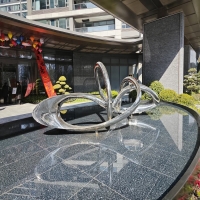Welcome to the website for landscape facilities products and knowledge.
How does the table’s design contribute to its overall resistance to bending under load?
The fundamental resistance of a table to bending under load is not a matter of chance, but a direct consequence of deliberate design choices rooted in mechanical principles. The primary defense against bending is the table's moment of inertia, a geometric property of its cross-section. A thicker tabletop inherently possesses a higher moment of inertia, making it significantly more resistant to deflection than a thin one. However, design goes beyond mere thickness.
The strategic use of aprons—the horizontal frames connecting the legs beneath the tabletop—is a classic and effective design intervention. These aprons act as continuous beams, transferring load from the center of the table towards the legs, which are the primary load-bearing points. This drastically reduces the unsupported span of the tabletop, the key factor influencing bending. The material selection is equally critical. Solid hardwoods, engineered woods like plywood, and metals like steel all offer high modulus of elasticity, meaning they deform very little under stress. A table made from a stiff material will inherently bend less than one made from a more flexible material, even with identical dimensions.
Furthermore, the configuration and bracing of the legs create a stable substructure. Placing legs at the corners maximizes the supported area. Adding cross-bracing between the legs transforms the structure from a potentially wobbly frame into a rigid triangulated unit, preventing lateral movement and distributing forces more evenly. For larger tables, a central pedestal base with splayed feet is often employed. This design channels the load directly down a central column and uses the wide footprint of the feet to create a stable, lever-resistant system.
Modern engineering also utilizes ribbing or corrugation on the underside of tabletops. These features add minimal weight but dramatically increase the moment of inertia, much like an I-beam does in construction. In essence, a table's resistance to bending is a symphony of its geometry, material properties, and the intelligent integration of supportive elements like aprons and bracing, all working in concert to ensure structural integrity under demanding conditions.
Related search:

Recommendation
Abstract art sculpture, stainless steel metal sculpture, large-scale water feature sculpture